6. Brother
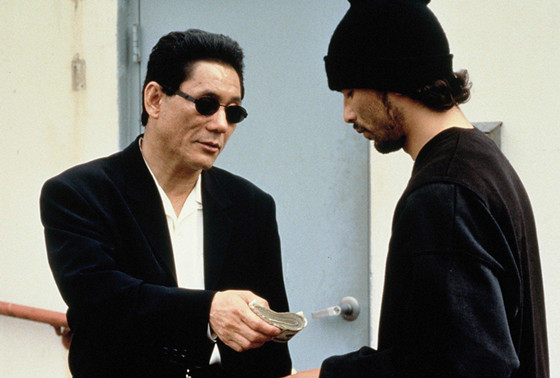
In the year 2000 Takeshi Kitano would venture outside of Japan to make a film for the first time. Choosing Los Angeles, California for the backdrop for his old-fashioned Yakuza film with a foreign twist.
Mayamoto is a Yakuza that finds himself in some trouble after a gang war erupts due to the murder of his boss. To help keep the peace Mayamoto is exiled from Japan. He heads to the United States to meet his younger half-brother Ken who lives in Los Angeles. Ken and his friend Denny run a local small time drug business which starts to grow as Mayamoto joins them and they begin to take over.
Brother feels more like a commercial film than most of Kitano’s work. It differs from the likes of Hana-Bi and Sonatine, which although they are acclaimed, they are slower paced and structured differently from Hollywood films.
This is ultimately a positive and a negative for Brother. The change of style may have turned off some of his fans and critics as it feels less artistic. But the film is a lot more accessible and entertaining from start-to-finish for a broader audience. It could easily be a starting point for anyone wanting to check out Takeshi Kitano’s filmography.
Some of Kitano’s regular actors make the trip across the pond to star in this film including Claude Maki and the brilliant Susumu Terajima. Susumu is a real highlight of the film, often stealing many of the scenes with his hot-headedness and his hilarious comedy scenes, including any time they play basketball. Omar Epps delivers a great performance from the American actors. His unexpected friendship with Mayamoto is charming and intriguing, and he peaks with a heavy emotional scene which seems completely improvised.
Kitano ultimately wasn’t completely happy with the end result of Brother, especially due to many cuts which had to be made so it could achieve it’s R rating. The film was meant to help him break in to the American film market with more exposure and a greater audience, but it turned out to be the last time the director would ever shoot a film outside of Japan.
5. Kikujiro
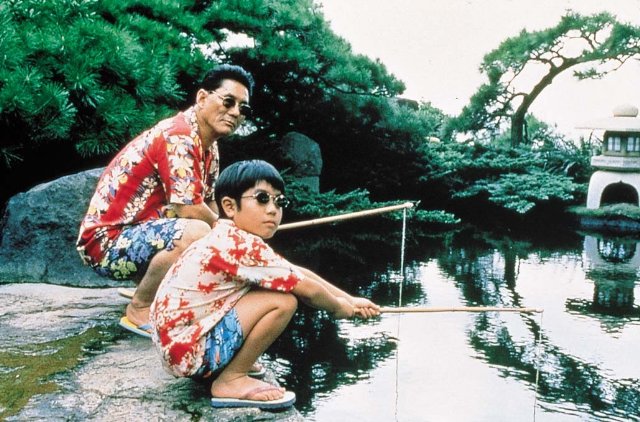
Once again departing from his roots in 1999, sandwiched in-between crime films Hana-Bi and Brother, Takeshi Kitano directed a family friendly road-movie Kikujiro.
A young schoolboy Masao is determined to travel a long distance in hopes of finding his mother that he has never met. Kikujiro is a loud-mouthed, rude and opportunistic neighbour of the boy. He is the most unlikely companion for his trip but is forced to help the boy on his journey by his partner. Kikujiro isn’t taking the trip seriously in the beginning but after some twisted events unfold, the 2 of them start to bond and go on their adventure together meeting some odd-ball characters along the way.
Kitano was inspired by The Wizard of Oz and decided to make a film with the basic idea focusing on a road trip. The main character Kikujiro is largely based on his own father, Kikujiro Kitano who was a bad gambler that often struggled to pay the rent.
One of the main themes of Kikujiro is alienation from society. The protagonists are outcasts in their own way, and that’s what eventually leads them to bond and get on. Along the road, the characters they meet who are not fitted to social norms are often the most helpful. While the characters they meet who are more socially acceptable are the people they often have bother with.
Although the film has mainly dark elements and situations, it still feels upbeat and light-hearted due to the summer setting, Kitano’s character, the wacky encounters and the musical score. Joe Hisaishi once again composed the soundtrack with the main theme ‘Summer’ being one of his most well known compositions.
4. Violent Cop
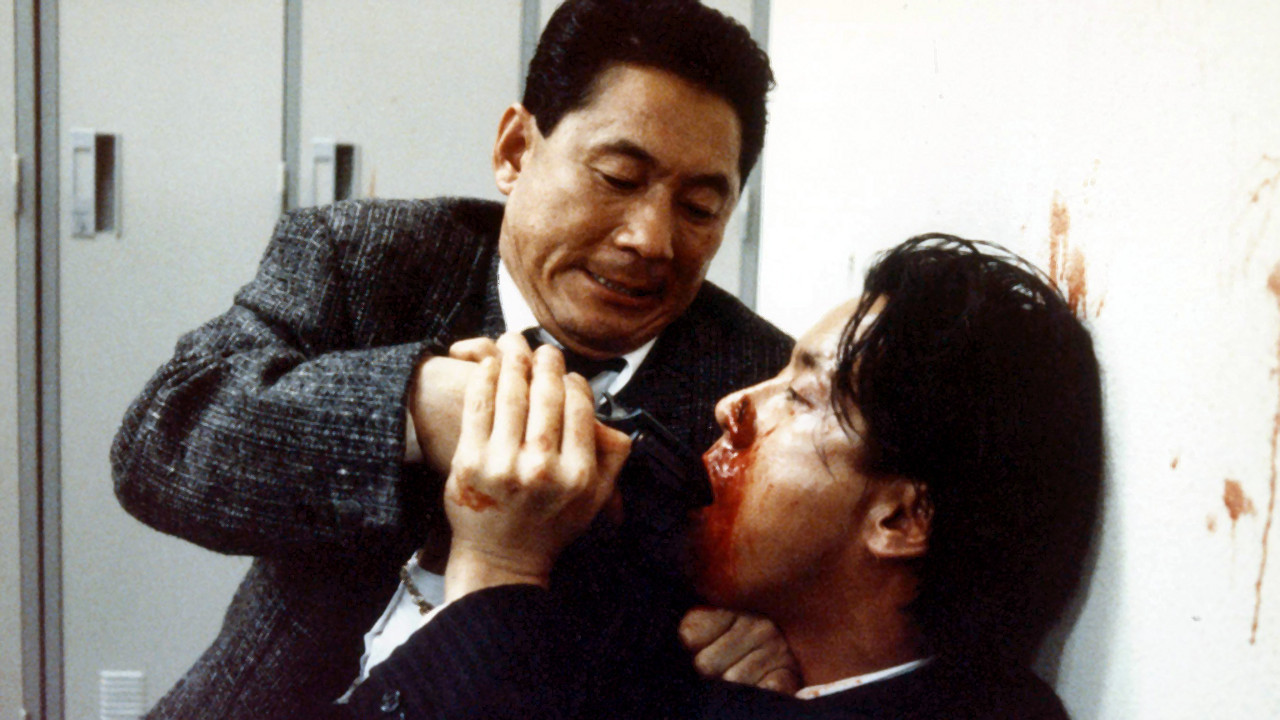
Legendary director of ‘Battles Without Honor or Humanity’ and ‘Battle Royale’ Kinji Fukasaku was set to direct 1989’s Violent Cop. However, due to scheduling conflicts with Kitano’s TV commitments, the director frustratingly quit. Kitano stepped in as a first time director and also rewrote the majority of the script changing it from a comedy to a dark police drama.
Azuma is a rogue detective, with his rebellious attitude and lack of respect for his superiors, he often uses violent methods when confronting criminals. After the suicide of his best friend Iwaki combined with the Yakuza threatening his sister, Azuma goes on a personal vendetta to seek justice the only way he knows how.
In Violent Cop, Kitano would essentially set the path of his film career. Taking up the mantle of a Dirty Harry type cop, Takeshi would break the stereotype of being a comedian and set the standard for his role of an anti-hero. Many of his other traits would begin with Violent Cop such as the minimalistic film-making, Yakuza themes, brutal violence, long static cuts and reserved acting.
The Japanese title of the film is ‘So No Otoko Kyobi Ni Tsuki’ which roughly translates to ‘Warning, This Man Is Dangerous’, which is very appropriate. The story is extremely dark with sudden bursts of brutal violence and some scenes which are rather difficult to watch. Surprisingly the film was a moderate financial success in Japan, although native audiences were left feeling confused by Kitano’s departure from comedy.
3. Zatoichi
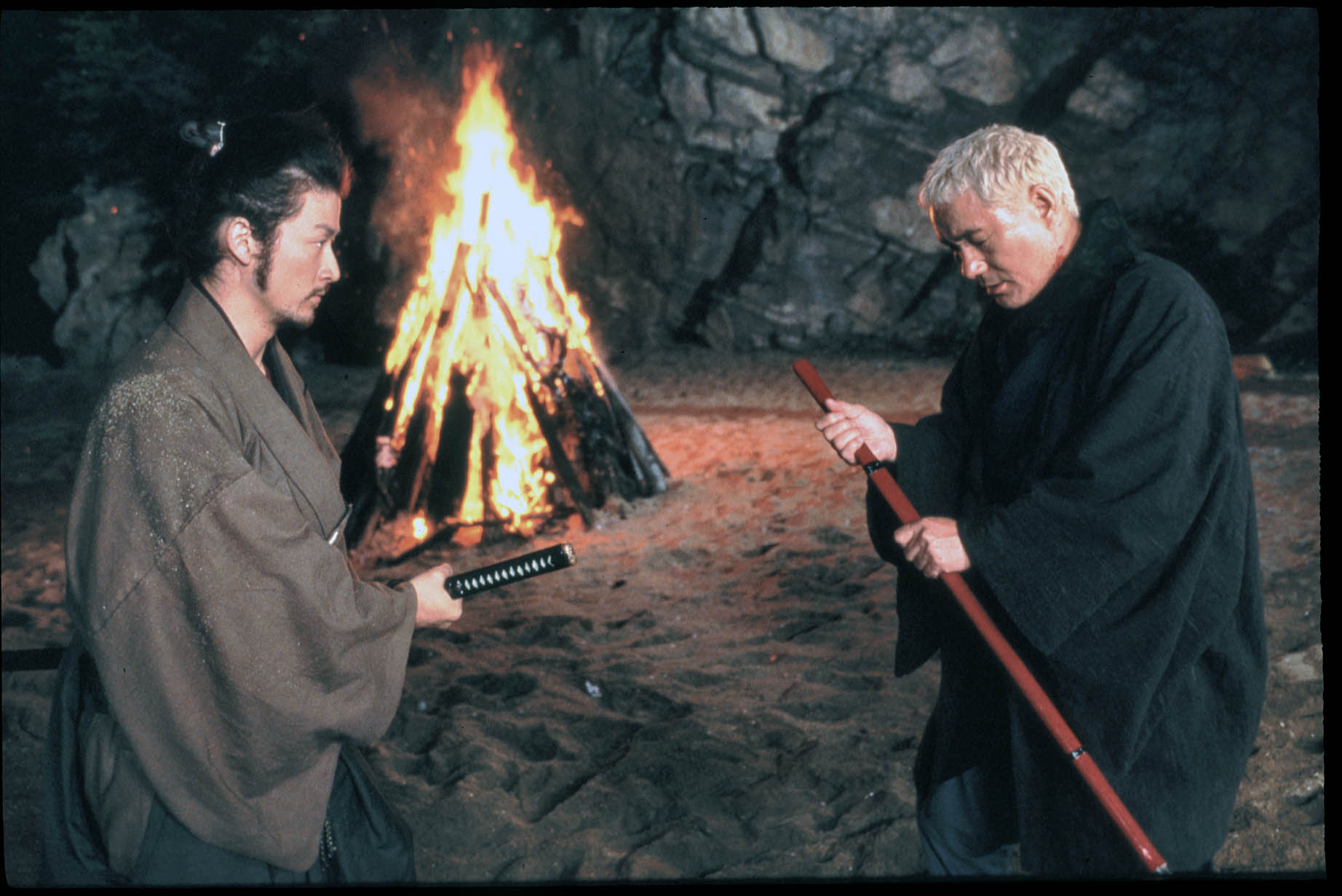
For Kitano’s eleventh film he would tackle the revival of one of Japan’s all time classic Samurai series, the blind swordsman Zatoichi.
Zatoichi is a blind man living his life as a masseur and gambling on the side. But secretly, behind his quiet disguise, he is actually a master swordsman, with the ability to slice down enemies with precision and a lightning fast draw. When Zatoichi meets two Geisha who are trying to avenge their parents’ murder in a small village ran by powerful samurai and gangs, he takes it upon himself to help them and the local villagers.
Takeshi Kitano was approached to make Zatoichi after Shintaro Katsu who played him throughout the series died. Rather than use his familiar style and traits, he decided to make it with more common film-making processes to create a more commercial film and not let anyone down.
Although differing majorly from his other work, there are still many Kitano-isms present. He plays a Samurai of a few words, with a stone face, that suddenly bursts in to violence with his sword. Replace the role of a Samurai with a Yakuza and replace the weapon of a sword with a gun and you have something very familiar for Kitano.
For the soundtrack, Keiichi Suzuki would take control as composer. Keiichi was more fitted for Zatoichi because he is more percussion based than Kitano’s regular collaborater Joe Hisaishi. Kitano also hinted that Hisaishi had became to expensive, which could be due to his popularity skyrocketing due to his successful Studio Ghibli scores.
Zatoichi would go on to be a big success in Japan, as well as critically. Winning numerous awards internationally including the Silver Lion for Directing at Venice Film Festival and the Audience Award at Toronto International Film Festival.
2. Hana-Bi
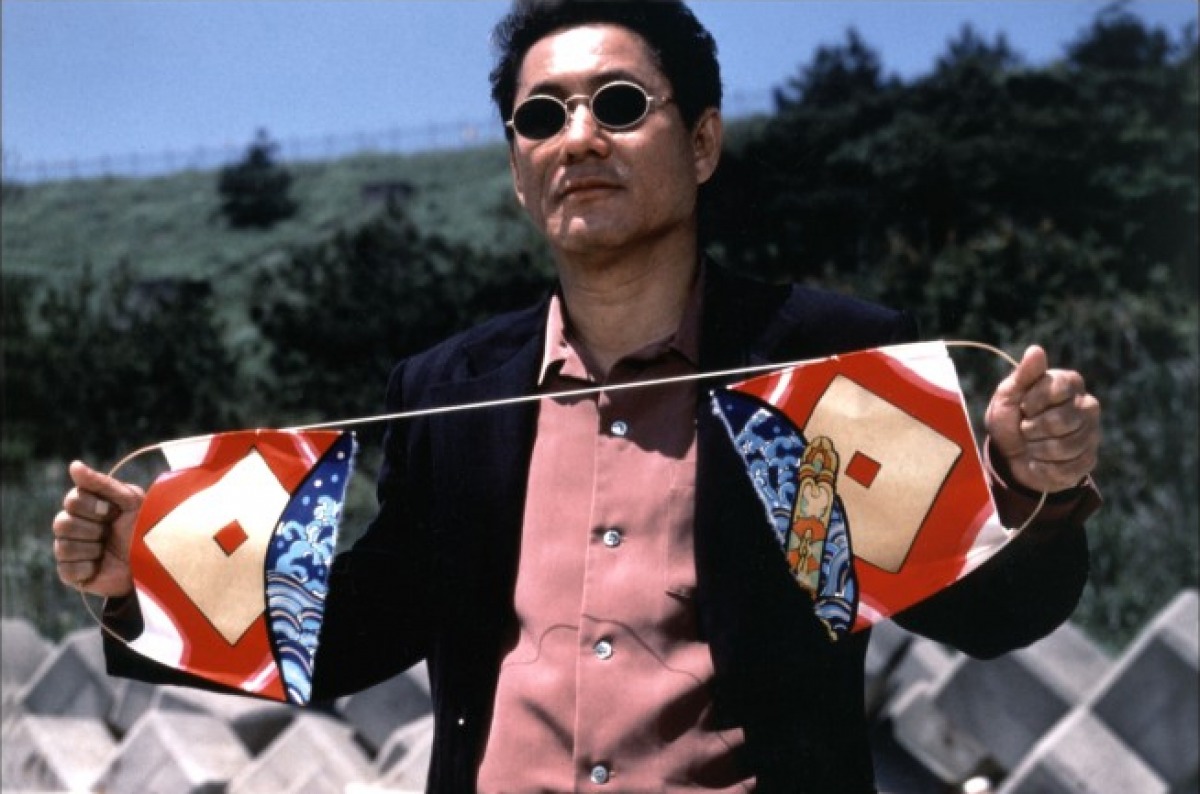
Hana-Bi commonly known worldwide as it’s literal translation Fireworks would establish Takeshi Kitano as one of the great Japanese film-makers of his time. Receiving international acclaim and winning numerous awards including the highly coveted Golden Lion at the 54th Venice International Film Festival. After seven films, finally Kitano would be accepted in his native Japan as a serious director.
Nishi is a cop who leaves the force after a series of incidents. In pursuit of a gunman, his partner Horibe is seriously wounded and two colleagues are killed. Horibe is now wheelchair-bound and left feeling suicidal. On top of that, Nishi’s wife is slowly dying of leukemia. Nishi is now dedicated to providing for his friend and taking care of his wife. After robbing a bank to ease his crippling debts, Nishi takes his wife on a final trip across Japan while they are pursued by loan sharks as well as the police.
The character of Horibe is partly autobiographical, after his accident he is left wheelchair bound and often feeling helpless, he takes up painting. Similar to real life Kitano, who after his motorcycle crash spent a long time recovering, took up painting as a form of expression and to ease his mind. The painting’s used throughout the film are actual art work painted by Takeshi Kitano himself. Many of which are used to help structure the scene or show underlying emotion.
Even though the heart of the film revolves around Kitano’s character taking care of his wife, he hardly speaks and has restraint acting. Their story isn’t filled with cliché hand-holding and expressing their love for one another, in fact Nishi often seems distant or a little cold towards his wife. This results in making the finale all the more emotionally powerful.
1. Sonatine
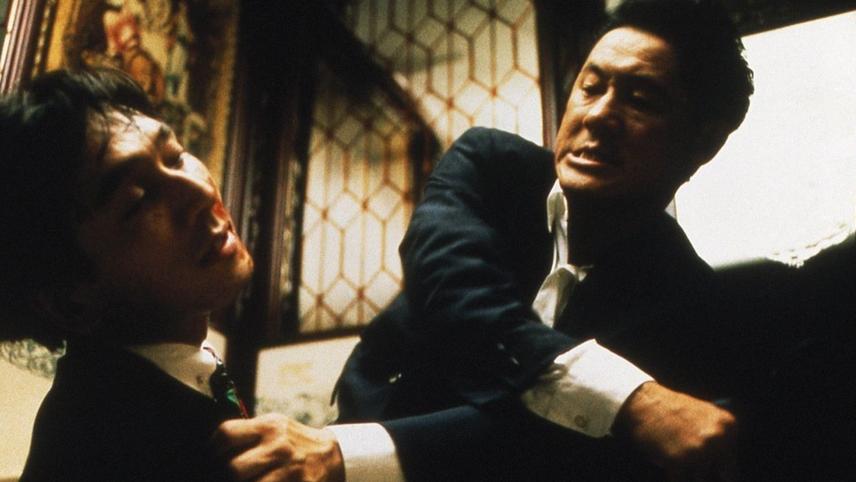
In 1993 Kitano released his 4th film, a yakuza themed story called Sonatine. This ended up being another commercial failure in his native Japan. However, the film put him on the map internationally. It was nominated and won numerous awards including the Cariddi D’oro award for Best Film at the 1993 Taormina Film Festival. Sonatine also received positive reviews from International critics who didn’t have preconceptions of Kitano as a comedian.
A yakuza named Murakawa is sent on a mission with his clan to Okinawa to help an allied clan settle a dispute. Even though Murakawa is suspicious of the assignment, they go anyway. After being ambushed resulting in several men dead, they take up hiding on a remote beach-house. As they pass the time playfully between themselves, it becomes clear that they have been set up and Murakawa plans revenge.
The producer of Sonatine wanted Kitano to shoot an action drama similar to John Woo’s style or a Die Hard type film. Kitano agreed with no intention of actually achieving this. Kitano and the cast would fly to a remote island and shoot the film while keeping the producer out of the loop.
The bulk of the story takes place with Murakawa and his men killing time on a beach. Which is when the film is most alive and entertaining. The characters are all extremely likeable and there’s hilarious moments throughout. Especially the scenes of them shooting cans off of each others heads, having fights with fireworks, digging hidden-holes as traps across the beach and of course the most iconic sumo wrestling scene which is just creatively bizarre.
Hidden behind the playful charms, beautiful scenery and mesmerising dream-like music, there is a serious underlying message about death and suicide. This may have been Kitano expressing his own personal feelings as he was currently in a troubled period of his own life which resulted in his motorcycle accident. Kitano later claimed the crash was an “unconscious suicide attempt”.
Author Bio: Craig Nixon is an Asian film critic from Glasgow, Scotland. He is also a fan of the films ‘Cannibal Holocaust’ to ‘Mean Girls’ and everything in between. Follow his Asian Cinema blog www.temptasianfilm.blogspot.co.uk.